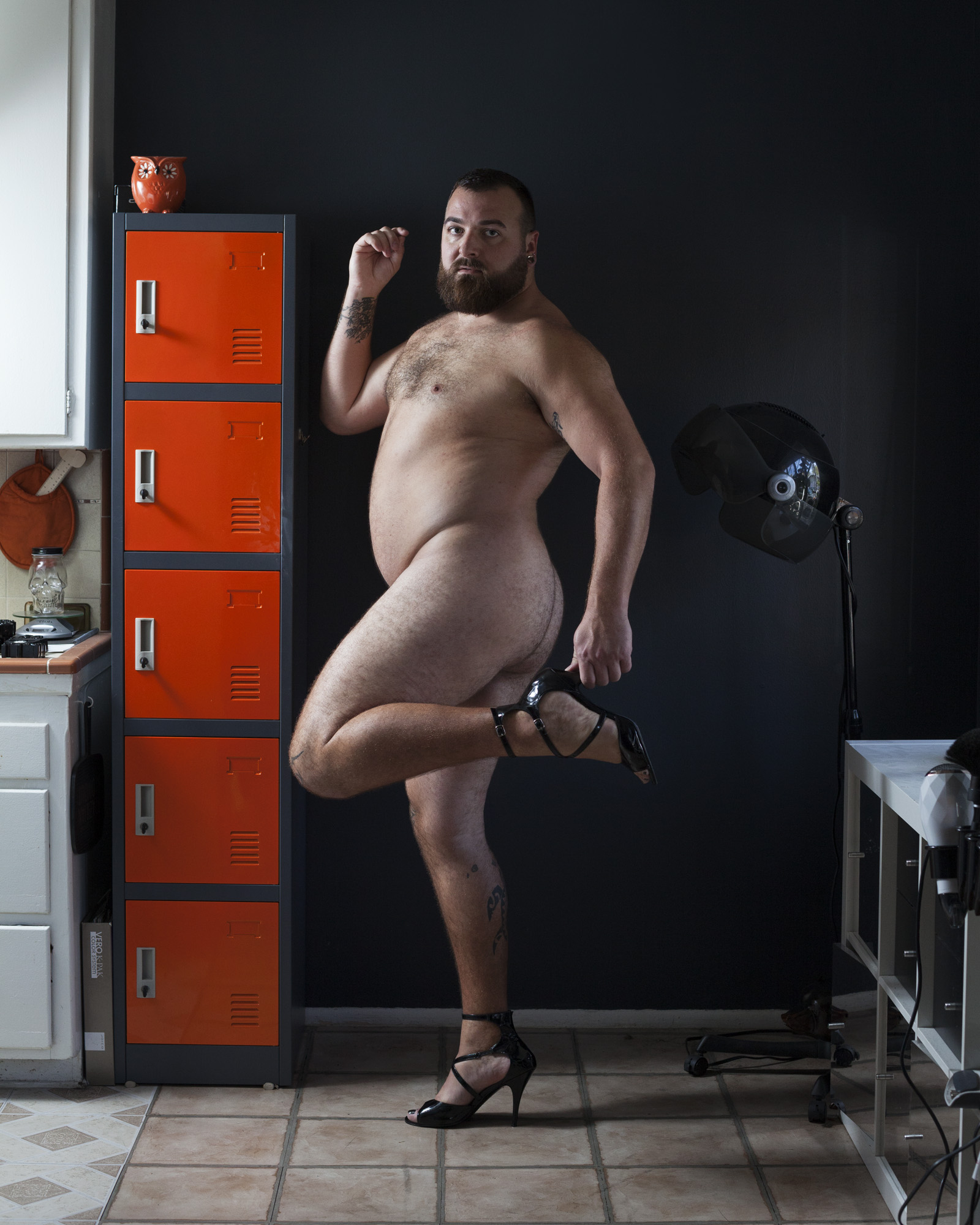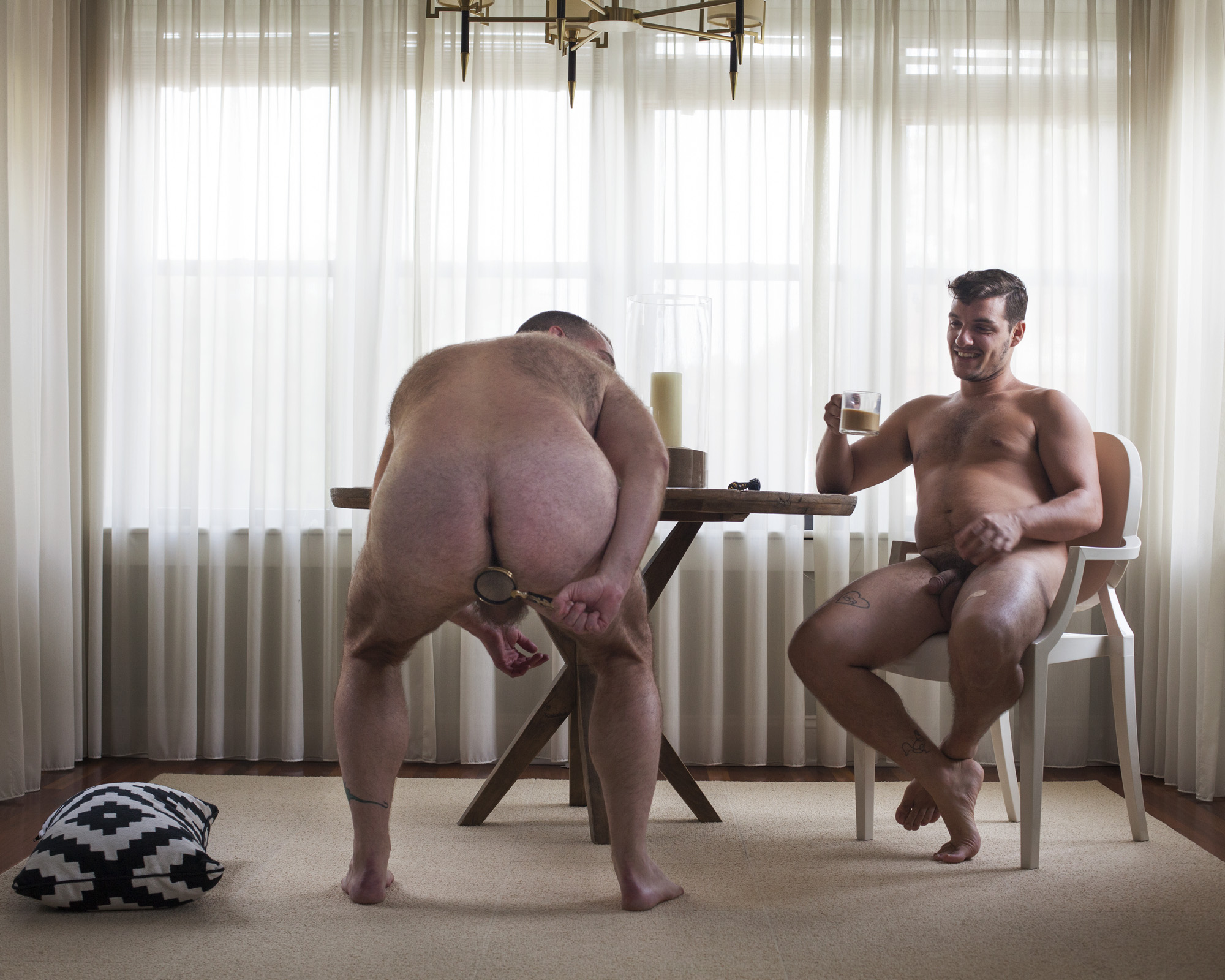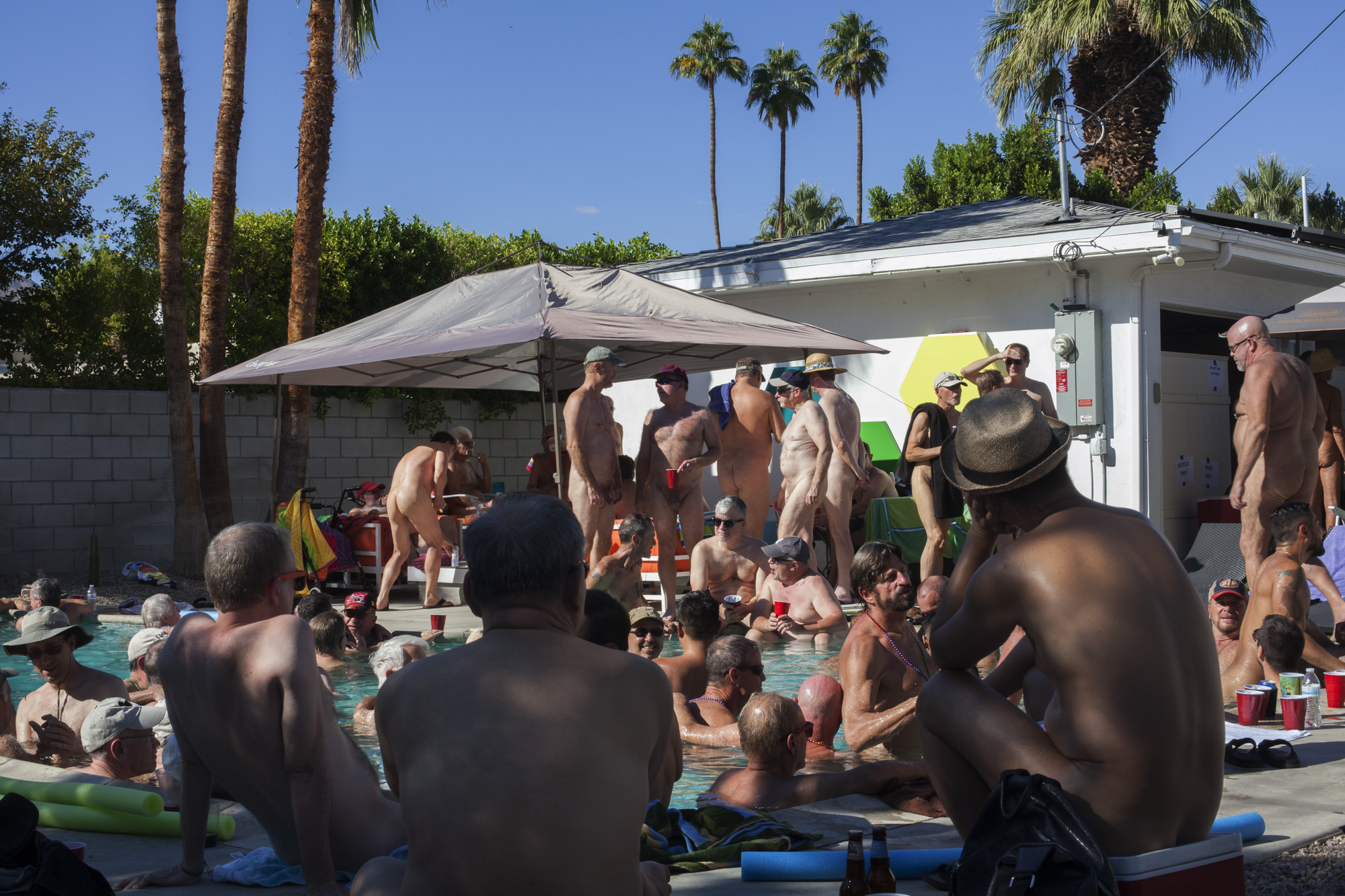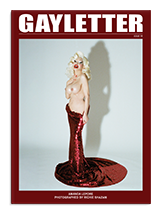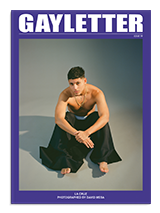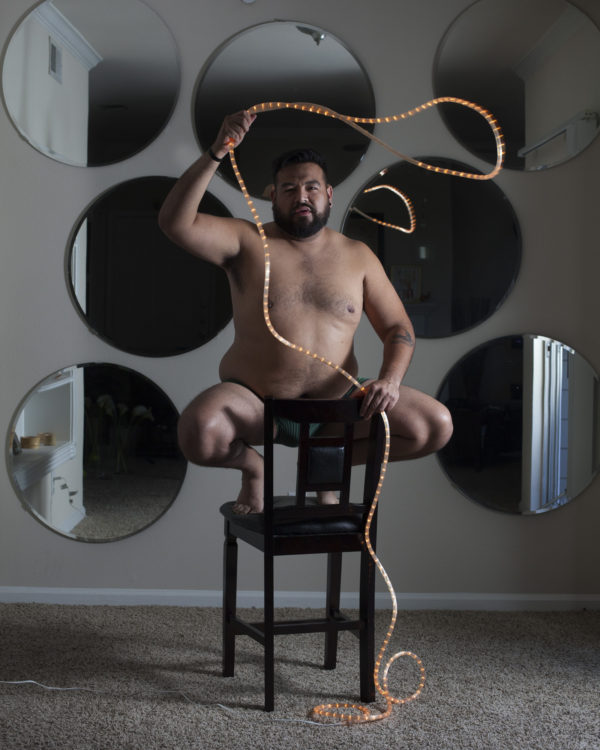
PHOTOGRAPHY BY MICKEY ALOISIO
American Wildlife
An intimate peek into Mickey Aloisio’s latest work.
In GAYLETTER Issue 5, photographer Mickey Aloisio told us about his photo project Gay Wildlife. For that project, Mickey photographed men — particularly those belonging to the “bear” community, as Grindr, and the like, label them — in their homes around New York City. Since then, Mickey has traveled across the United States further developing the project into what he now calls American Wildlife.
A lot has changed in this country since Issue 5’s launch (just last fall), greatly impacting the LGBTQ+ community (and other minorities) — so I had a conversation with Mickey about American Wildlife; the journey he took, and how this project fits into current affairs.
I see that transitioning from Gay Wildlife to American Wildlife, you’ve begun to include yourself in your images. For that project, I actually included myself in some of the images too, but they never made it to my final edit. I wasn’t sure exactly how to fit them in. However, when I look back, I feel that as the photographer, I was distant from the work, despite feeling very close to it throughout the entire process of creation. With American Wildlife, I wanted the journey to be something more.
There’s something to be said for what happens when the photographer and subject are both on the same playing field, when the power is evenly distributed between the two. I think it’s about getting close to another person. Some of us need people, or the experience of another — more than we know or would like to let on — that we’ll go to what seems like great lengths to get the chance to see or learn just a little more about someone.
What was your creative process like with this project compared to Gay Wildlife? I started to question whether I could create, throughout the country, what I made in New York, so I decided to challenge that. Once I left NYC, I noticed it had a lot to do with just showing up and interacting with people around me. I would go to the local gay bars and I’d introduce myself to as many people as I could. I’d show them my work and talk to them about the project, and if they were interested, we’d make plans to create a photograph in their home in the near future. Of course, I used gay apps too — mainly Scruff and Growlr — but I tended to have better luck in person. There is a level of trust gained almost instantly, which is and was never there online.
This approach was very similar to that of Gay Wildlife — almost entirely the same. However, because I was moving from city to city every week or two, I had to nudge myself into these communities and I had much less time to do that than I did for Gay Wildlife. It was a lot like meeting a partner’s parents for the first time over and over again, since anyone I met along the way could be in the position to help me in one way or another.
I think the work itself has its differences as well. The portraits seem to have more conflict within them. They’re a bit more intense, more focused. The colors are more monotone and play a more important role in each image as compared to my work in the past.
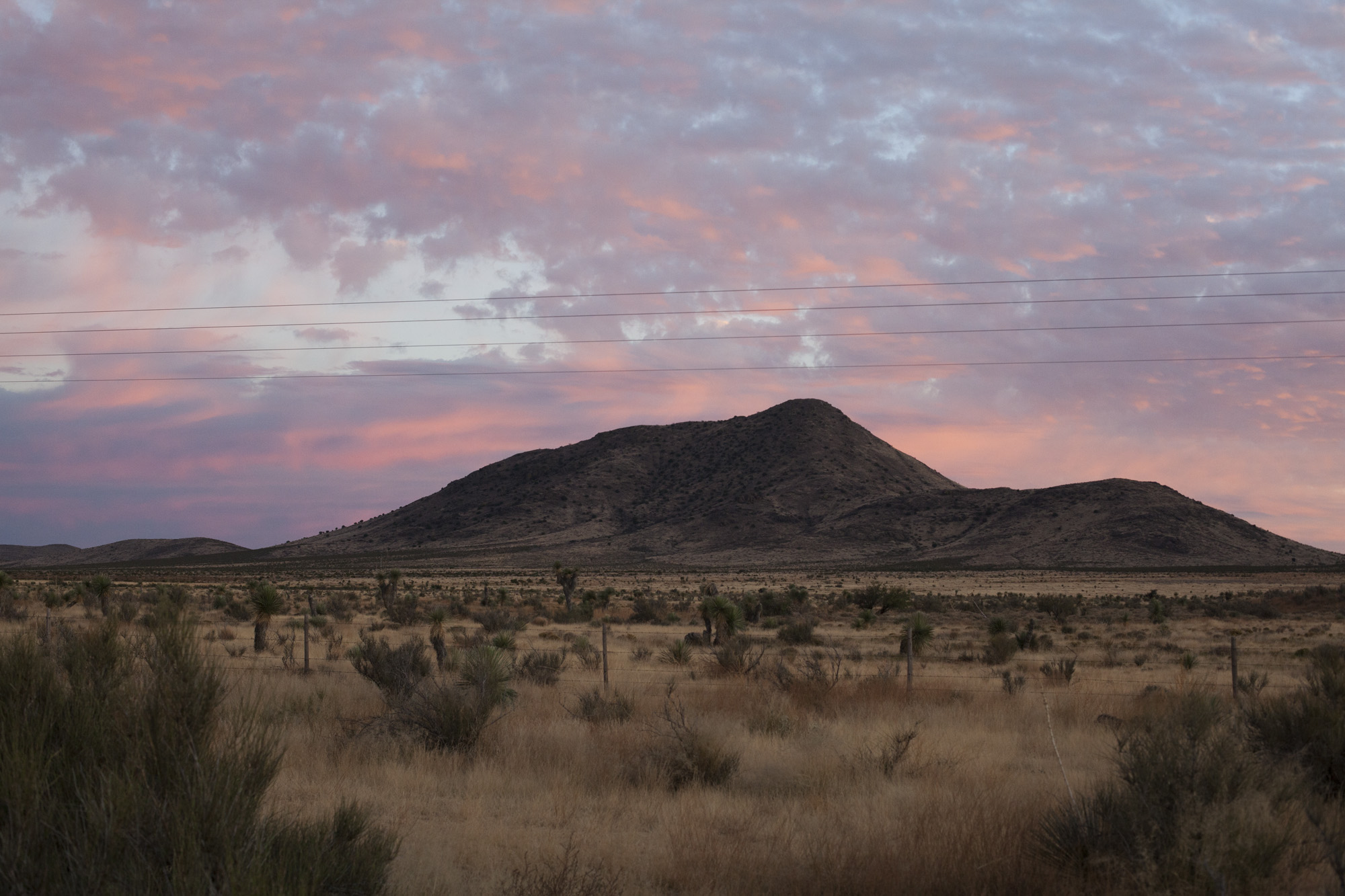

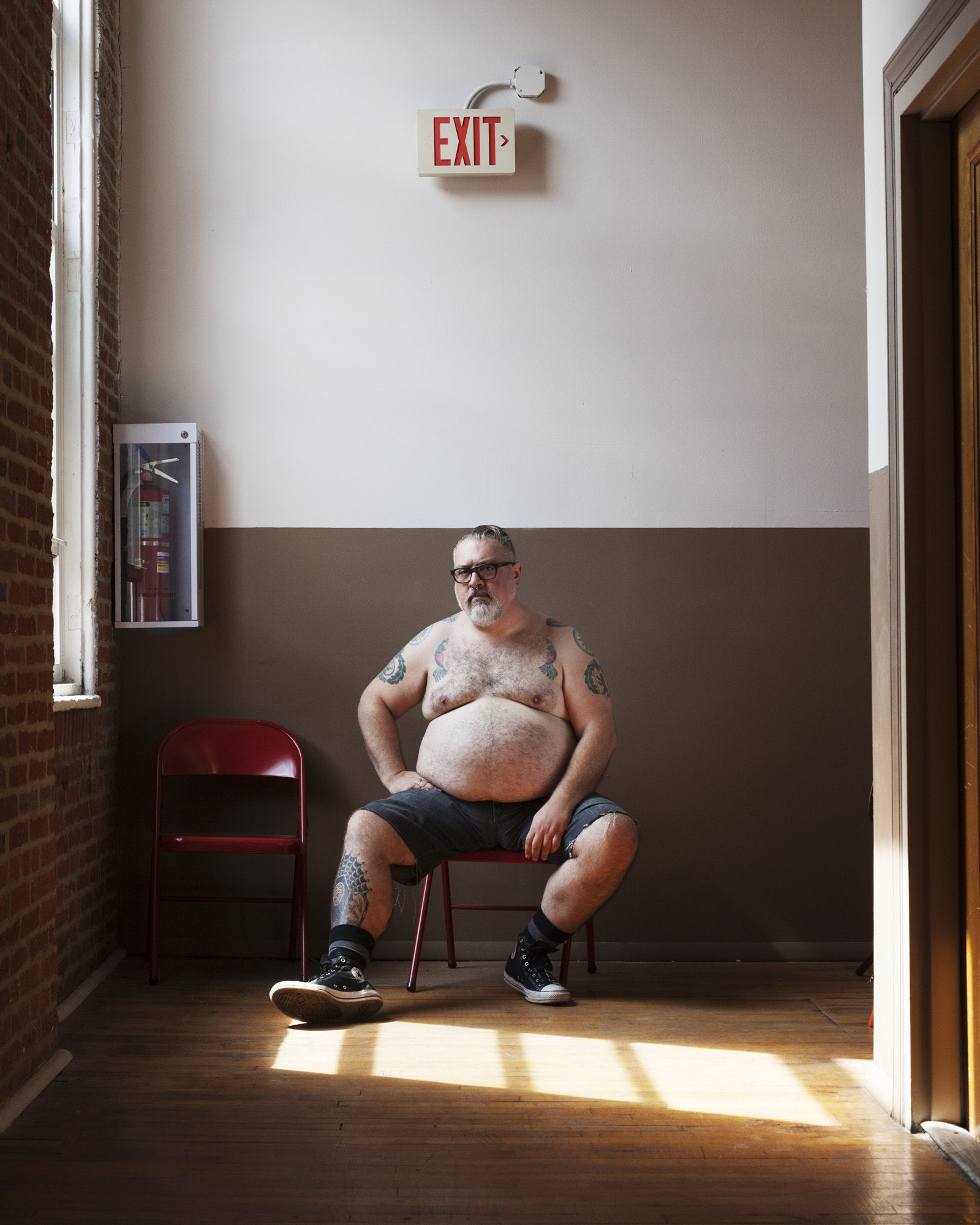
How did the project evolve from when you set out on your road trip to when you arrived back home? When I started this trip, I was looser with my approach. Towards the end, I began to realize what worked and what didn’t. I started to become more conscious of who I was shooting and what I was looking for. I was becoming more comfortable with what I was doing.
Things happened while I was on the trip. In particular, Donald Trump got elected while I was driving through eight endless hours of Texas. It was then that I saw the project’s importance. It became something that was more serious than it was when I left [New York]. This idea infused itself in every place I went, every conversation I had, every reason why I was anywhere in the first place.
Did you find that men’s personalities or acceptance towards bears vary across different parts of the country? For the most part, I tended to go towards where there would be a big boy crowd, so I never noticed what it felt like outside that bubble. What did vary, though, was how comfortable people were with being photographed in general. In some places, they saw my photographs and instantly jumped to the idea of “nudes” as being this scandalous thing. Some folks made jokes like, “Are you going to get your photo taken? Huh? *elbow jab* *wink* *wink*” like it was something to be laughed about.
I think it boils down to the acceptance from their local communities. The cities I stopped in were more liberal and had good gay scenes because there would be more opportunities for me. I believe that the work, or amount of work made, is a direct reflection of where it was conceived and communicated through the people who inhabit it.
What is the most vivid experience that you had while working on American Wildlife and where did it occur? I went up to Portland [Oregon] and only knew one person, who I actually didn’t really know; we just connected online beforehand. He was a cute queer boy who played piano for a church. He said I could stay with him for three days. The night I arrived, a friend put me in touch with someone named Joe. We met at a bar and probably spent the next twelve days together. By the time my three days with the pianist were over, Joe told two of his friends — they sold their NYC brownstone to live in a mansion in the beautiful wet woods of Portland — about what I was doing. I stayed in their house for a week or so. It was the longest I stayed in one spot. The place had a hot tub and a photo studio upstairs that I used. I had about five subjects over at that house to photograph, each in a different room.
This is all to say that I had countless experiences, all of which were and are so equally vivid to me. However, this Portland story was exactly what I had hoped for when I decided to go on the trip without an exact plan. I went up there with the idea of staying for three days — I left after two weeks or so. I was a bit sad to say goodbye, having learned that sometimes, belonging to a community can grant you opportunities you may not otherwise have.

